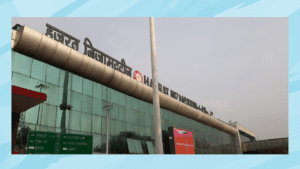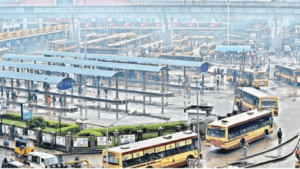Interstate 5 (I-5) is a major highway running through California, and during winter, the chain screening at Fawndale, located 10 miles north of Redding, becomes a critical checkpoint for safe travel. Known as Exit 689, this spot marks where I-5 climbs into the snowy Siskiyou Mountains, where icy roads demand extra caution. Caltrans, California’s transportation department, sets up chain screenings to ensure vehicles have proper traction devices, like snow chains, to handle harsh winter conditions. These checks help prevent accidents and keep traffic moving safely. Whether you’re a truck driver, commuter, or road-tripper, understanding the I-5 chain screening at Fawndale is key to avoiding delays and staying safe. This article covers why these screenings happen, how they work, and tips to prepare, all in a friendly, straightforward way.
Why Chain Screenings Happen at Fawndale
Fawndale, at Exit 689 on I-5, is where the highway starts its steep climb into the Siskiyou Mountains. The elevation rises quickly, turning rain into snow or ice, creating dangerous driving conditions. Caltrans enforces chain screenings during winter storms to ensure vehicles can handle these “snow zones.” Snow chains or traction devices improve grip on icy roads, reducing the risk of crashes or stranded vehicles. Heavy trucks and vehicles with trailers are often the focus, as they’re more likely to lose control without chains. According to Caltrans, screenings are mandatory when signs indicate “Chains Required,” and fines up to $250 can apply for non-compliance. These checks protect everyone on the road, especially in severe weather when visibility and traction are low, making Fawndale a critical safety point for northbound I-5 travelers.
How the Screening Process Works
When winter weather hits, Caltrans sets up chain screening at Fawndale, typically at the northbound offramp of Exit 689. All vehicles are checked, but big rigs and vehicles with trailers face stricter rules. Drivers must stop and show they have snow chains or approved traction devices, like cable chains. If you don’t have chains, you may be turned back to a lower elevation, like Redding, until conditions improve. Screening can cause delays, sometimes 30 minutes to two hours, depending on the storm and traffic. Caltrans uses QuickMap and CCTV cameras to monitor conditions, and officers may halt trucks without chains entirely. In 2024, Caltrans added installation bays with lighting at Fawndale to help drivers put on chains safely. You’ll need to drive at reduced speeds (25-30 mph) once chains are required. Checking Caltrans QuickMap before your trip helps you plan for these stops and avoid surprises.
Preparing for Chain Screening
Being ready for Fawndale chain screening saves time and stress. First, check Caltrans QuickMap or call 800-427-7623 for real-time road conditions before heading out. Pack snow chains that fit your vehicle—check your tire size and practice installing them beforehand. Even four-wheel-drive vehicles need chains in severe conditions, so don’t assume you’re exempt. Inspect chains for damage, like cracks or rust, to avoid issues during screening. Stock up on chains in Redding, as options are limited past Fawndale. Bring warm clothes, snacks, and a full fuel tank in case of long delays. If you hire a chain installer at the checkpoint, get a receipt with their badge number, as they’re independent workers, not Caltrans employees. For electric vehicles, note that their weight can worsen sliding, so chains are a must. Preparation ensures you pass screening smoothly and stay safe on icy roads.
Challenges and Delays at Fawndale
Chain screenings at Fawndale can cause headaches, especially during big storms. Traffic often slows, with lines of trucks and cars waiting at Exit 689, sometimes stretching to nearby Oasis Road. Delays can last up to two hours, particularly when Caltrans holds big rigs or closes I-5 entirely due to heavy snow. Crowded checkpoints and limited parking for installing chains add to the frustration. Some drivers try to skip screenings, risking fines or being turned back. Weather changes fast in the Siskiyou Mountains, so screenings may start or stop suddenly, catching drivers off guard. Poor preparation, like not having chains or using damaged ones, can lead to longer waits or unsafe travel. Checking Caltrans updates on social media or QuickMap helps you anticipate delays and plan alternate routes, though options like Highway 299 may also close. Patience and planning are key to navigating these challenges.
Tips for Safe Winter Driving on I-5
Beyond chain screening, safe driving on I-5 during winter requires extra care. Always check weather forecasts and Caltrans QuickMap before your trip to know if chains are required. Drive slowly—25-30 mph—when chains are on, as higher speeds can damage them or your tires. Keep a safe distance from other vehicles, as icy roads reduce stopping power. Avoid sudden braking or sharp turns to prevent skids. If you’re new to chains, practice installing them at home to save time at Fawndale. Carry emergency supplies like blankets, water, and a flashlight in case you’re stuck. Don’t ignore “Chains Required” signs, as fines can exceed $500 for trespassing during closures. If conditions worsen, consider waiting in Redding until the road reopens. Following Caltrans District 2’s social media for real-time updates keeps you informed. These steps help you stay safe and avoid trouble on I-5’s snowy stretches.
Why Fawndale Screening Matters
The I-5 chain screening at Fawndale is a lifesaver, ensuring drivers are ready for the Siskiyou Mountains’ tough winter conditions. By checking for chains, Caltrans prevents accidents and keeps the highway open, even during storms. This protects commuters, truckers, and travelers heading north from Redding. The screening process, while sometimes slow, saves lives by reducing crashes on icy roads. It also supports the region’s economy, as I-5 is a key route for goods and workers in Northern California. With upgrades like new installation bays in 2024, Caltrans is making screenings smoother. For drivers, being prepared with chains and checking updates means less stress and safer trips. Fawndale’s chain screening is a small but vital step that keeps everyone moving safely, making it an essential part of winter travel on I-5 in California.




